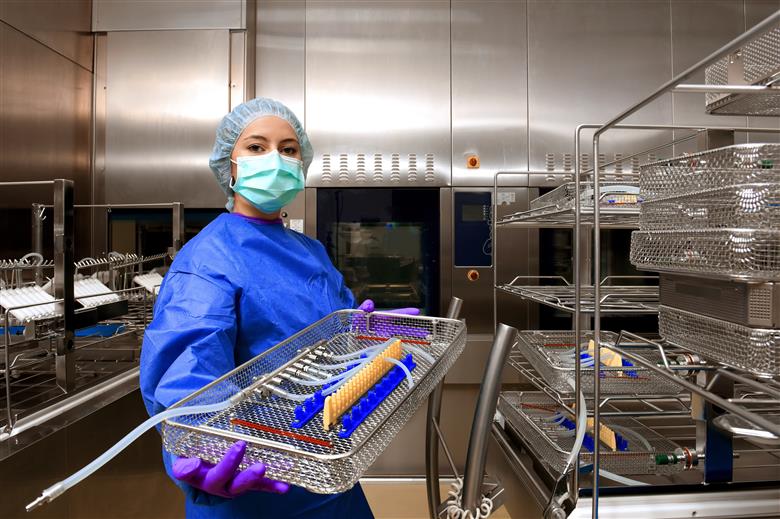SABIC, a global leader in the chemical industry, will highlight at MD&M West 2024 in Booth #3287 its versatile and durable ULTEM™ HU resins, which can help medical device manufacturers choose alternatives to ethylene oxide (EtO) sterilization. Demand is growing for materials compatible with other sterilization methods in anticipation of a new ruling by the U.S. Environmental Protection Agency (EPA) that may reduce EtO emissions from commercial sterilization facilities.
ULTEM HU resins are stable across many popular sterilization processes, providing the potential for multiple use options. These resins can also withstand multiple sterilization cycles. Their excellent retention of strength and color can help reduce breakage and discoloration, thereby potentially extending the useful life of applications made with these materials.
“Increasingly stringent environmental regulations are challenging the medical device industry to find materials that support compliance,” said Maureen MacDonald-Stein, director, Portfolio Strategy and Marketing, SABIC’s Specialties business. “SABIC’s knowledgeable team of industry experts and our ongoing innovation help enable the proactive development of material solutions to address these types of challenges. In the case of upcoming reductions in EtO emissions, we offer specialty thermoplastics that help device makers to smoothly transition to other sterilization methods without impacting key material properties.”
At MD&M West 2024, SABIC will give a presentation on this topic, titled “How thermoplastic material selection impacts durability and sterilization of medical devices.” The talk, given by Paul Nugent, SABIC’s senior business manager, will take place on Wednesday, February 7 at 3:30 p.m. PST in Design Alley. It will cover properties and performance data for ULTEM HU resins compared to those of polyphenylsulfone (PPSU) resin before and after sterilization, and application case studies.
Providing Alternatives to EtO Sterilization
Ethylene oxide gas is a human carcinogen, and long-term exposure can lead to harmful effects. Therefore, on April 11, 2023, the EPA issued a proposal to significantly strengthen and update Clean Air Act standards for EtO emitted from commercial sterilizing facilities. The proposed rule would reduce EtO emissions by an estimated 80 percent.
According to the U.S. Food and Drug Administration (FDA), approximately 50 percent of sterile medical devices are treated with EtO, totaling about 20 billion devices each year. In view of the upcoming EPA rule, which requires changes such as reducing the amount of EtO applied in medical device sterilization, device makers may wish to use other methods.
ULTEM HU resins are compatible with a number of mainstream sterilization methods, including vaporized hydrogen peroxide (VHP) gas plasma, steam autoclave, gamma radiation, electron beam, X-ray and ultraviolet-C. Under exposure to repeated sterilization cycles, these materials retain their high strength, dimensional stability and attractive aesthetics.
Customers can choose ULTEM HU1000 resin, an unfilled polyetherimide (PEI) featuring excellent mechanical and thermal properties, or ULTEM HU1004 resin a PEI blend offering good ductility and enhanced hydrostability. These grades are biocompatible, resistant to chemicals and inherently flame retardant.
Thanks to their strength and stiffness, unreinforced ULTEM HU resins can replace metal in medical device components, where they deliver light weight, design flexibility and streamlined processing. SABIC’s glass fiber-reinforced grades, such as ULTEM HU2200 and HU2300 resins, may also be options when even higher strength is required.
SABIC’s medical-grade products are backed by its Healthcare Product Policy, which validates these materials meet global safety standards, are covered by an FDA Drug or Device Master File and are subject to formula lock and a stringent change management process.
www.sabic-hpp.com
